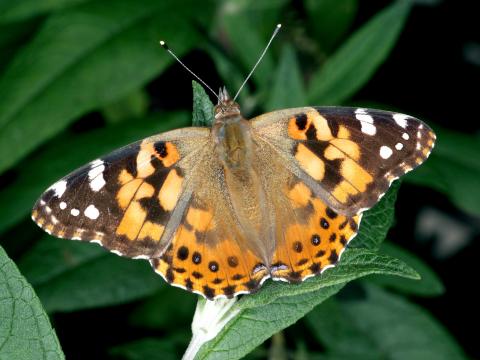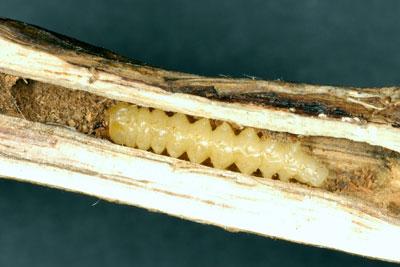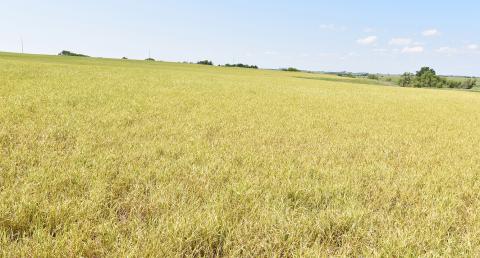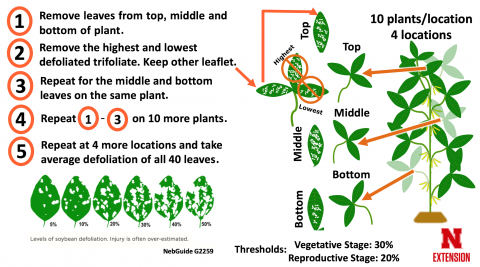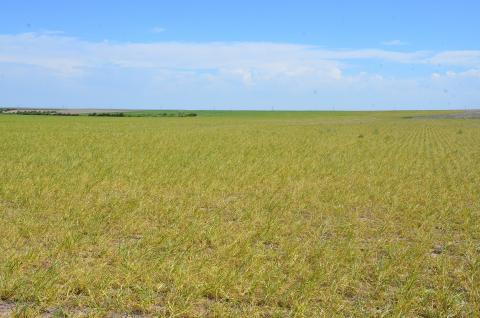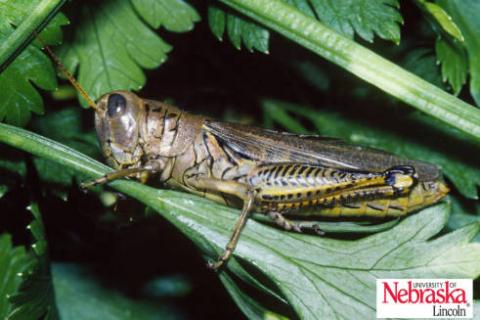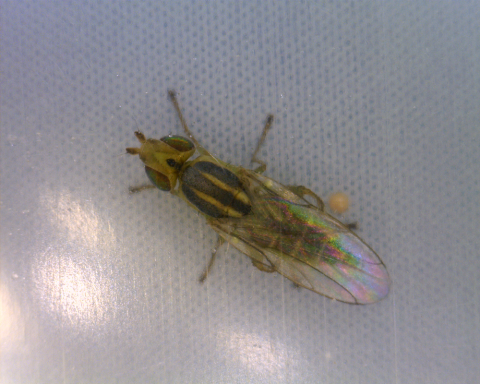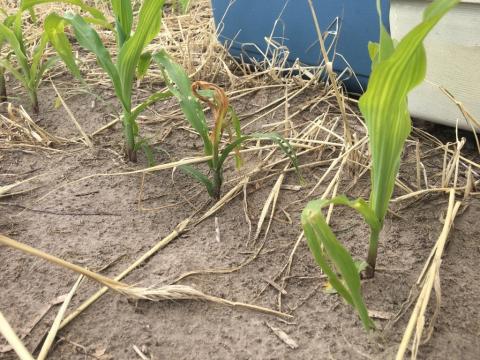Large Populations of Painted Lady Butterflies
August 8, 2017
Reports of painted lady butterflys have been numerous in rural areas, including in soybeans, causing growers to ask if there's likely to be an increase in their soybean leaf-eating caterpillars. Entomologists discuss this question and the insect's life cycle, and offer a "how-to" on estimating leaf defoliation.
Check Soybean Fields for Evidence of Soybean Stem Borer
August 7, 2017
Dropped leaves in soybean fields indicate soybean stem borers are feeding and causing leaf damage. These insects are expanding their range as a pest of soybeans in Nebraska and now can be found in several counties north of I-80.
Protect Future Wheat Yields: Control the Volunteer Green Bridge
August 2, 2017
Wheat streak mosaic virus (WSMV) problems have been extensive throughout the western Great Plains this year, significantly reducing the yield potential of many fields. A critical key in managing this threat in the next crop is elimination of volunteer wheat. Tillage or chemical weed control should occur at least one month before planting to allow host plants time to dry up and cease being a host.
Estimating Soybean Leaf Defoliation
July 26, 2017
Growers are reporting finding painted lady caterpillars and silver spotted skipper caterpillars in soybeans. This guide can help estimate leaf defoliation in soybean, key to determining whether treatment is necessary.
Why Control of Volunteer Wheat is Critical to Protecting 2018 Yields
July 13, 2017
Timely control of volunteer wheat and other weeds is key to managing yield loss risk in your 2018 crop. Yield-limiting risk factors affected by weed control include wheat streak mosaic and other diseases, insects (wheat stem sawfly and disease vectors), moisture loss, and increased weed seed production.
They're Back ... Time to Scout Field Borders for Grasshoppers
June 22, 2017
Populations of immature grasshoppers have been reported in areas bordering crop fields. If you're seeing one of the four species that harm cropland noted here, control may be warranted. Treatment is most effective when grasshoppers are small and still contained in field borders.
Adult Emergence of Suspected Wheat Stem Maggot from Infested Corn Plants
June 22, 2017
University researchers are studying why suspected wheat stem sawflies are being found again this year in Nebraska corn, previously thought to be a non-host. Major yield loss is not expected in corn from this pest.
Suspected Wheat Stem Maggot Damage in Corn following Cover Crops
June 13, 2017
Ag professionals across central and eastern Nebraska are reporting insect damage to corn following rye and wheat cover crops, likely from the wheat stem maggot. A recent field survey found stand losses in fields ranged from 2%-30% on a whole-field basis.

